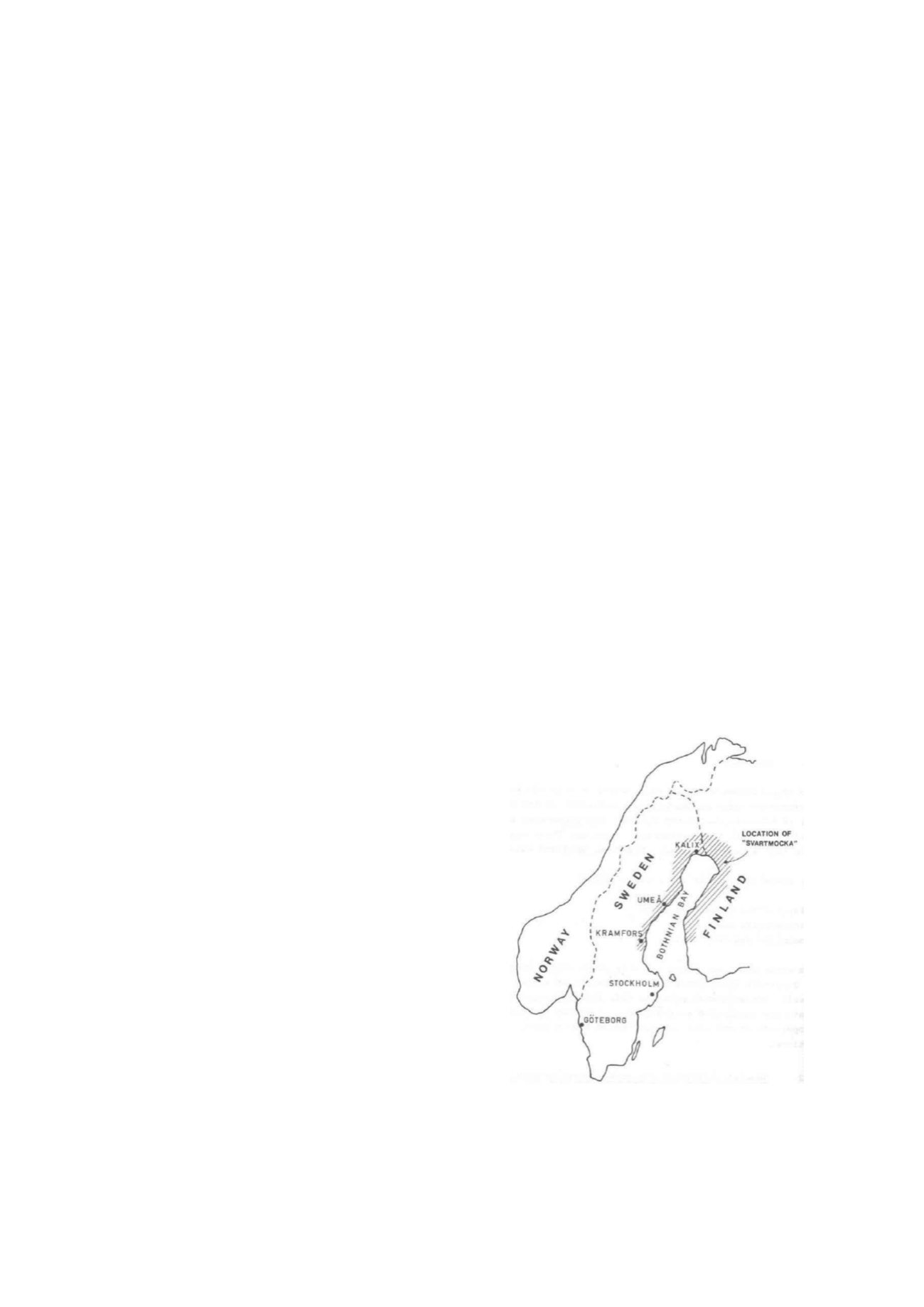
271
Proceedings of the 18
th
International Conference on Soil Mechanics and Geotechnical Engineering, Paris 2013
1
A new test field in sulphide clay with test embankments for study of compression
properties
Un nouveau essai sur le terrain d´argile sulfaté en mettant en place des remblais d´essai pour
l'étude des propriétés de compression
Westerberg B., Andersson M.
Swedish Geotechnical Institute / Luleå University of Technology, Sweden
ABSTRACT: In this paper on-going research of compression properties of Swedish fine-grained sulphide soils is presented. In the
paper, the establishment of two test embankments founded on sulphide clay at a new test field is described. Some selected results
from the project are presented. The characteristics of the particular types of sulphide soils investigated are shortly described. The
overall purpose of the research project is to improve the possibilities to predict long term settlements of structures founded on
sulphide soils.
RÉSUMÉ : Cet article présente des recherches en cours sur des propriétés de compression des sols à granulométrie fine suédois.
L´article décrit l’établissement de deux remblais d’essai fondés sur argile sulfaté, dans un nouveau essai sur le terrain. Quelques
résultats choisis du projet sont présentés. Les caractéristiques des types particuliers de sols sulfatés enquêtés sur le terrain sont
brièvement décrites. L'objectif général du projet de recherche est d'améliorer les possibilités de prédire des tassements à long terme
des structures fondées sur les sols sulfatés.
KEYWORDS: clay, embankments, sulphide, organic, compression, creep, settlements, geotechnical engineering.
1 INTRODUCTION
There is only limited knowledge concerning compression
properties of sulphide soils. There is thus a need for improved
tools to better predict settlements including creep settlements in
sulphide soils. Most often the predicted settlements of an
construction founded on sulphide soils deviates significantly
from those measured, and normally the predicted settlements
are too small.
Sulphide soils, as designated in this paper, are found and
common along the coast line of the Gulf of Bothnia, i.e. in
north-eastern Sweden over a distance of about 900 km and
north-western Finland, figure 1. Sulphide soils in Sweden are
not uniform, but properties like grain size distribution, water
content, and density vary as for other fine-grained soils with
location and often with depth (Westerberg and Andersson
2009). Sulphide soils in Sweden are most often designated as
organic silt to organic silty clay and in cases with higher organic
contents as silty or clayey gyttja (Larsson et al. 2007). In
sulphide soils, the structure is often relatively porous and the
voids between the mineral grains and clay particles are filled
with pore water, organic material and iron sulphide (Pusch,
1973; Eriksson et al. 2000). The organic matter and iron
sulphide are believed to contribute to the open structure, low
bulk density and high water content. The sulphide soils are
normally coloured black or varved with black bands and the
black colour comes from the iron sulphide (FeS). Sulphide soils
have normally low undrained shear strength, typically 10-20
kPa, and are in general very compressible and show significant
creep behaviour (Westerberg et al. 2005). These properties are
accentuated when the temperature is raised from in situ ground
temperature to room temperature in the laboratory (Eriksson
1992).
In this paper a few results are presented from an on-going
research project at the Swedish Geotechnical Institute (SGI)
concerning compression properties and settlement predictions of
sulphide soil (Andersson 2012). The results have been obtained
in connection with two test embankments founded on sulphide
clay in a new test field at Lampen outside the city of Kalix (see
figure 1) and next to the new railroad Haparandabanan. The
main purpose of the project is to improve the knowledge of
compression properties of sulphide soils, with focus on the
creep properties. Another aim is to establish extensively
instrumented test embankments where settlements and pore
pressures can be measured during many decades to come.
Figure 1. The approximate location of sulphide soils (shaded area) in
north-eastern Sweden and north-western Finland (Schwab 1976).


